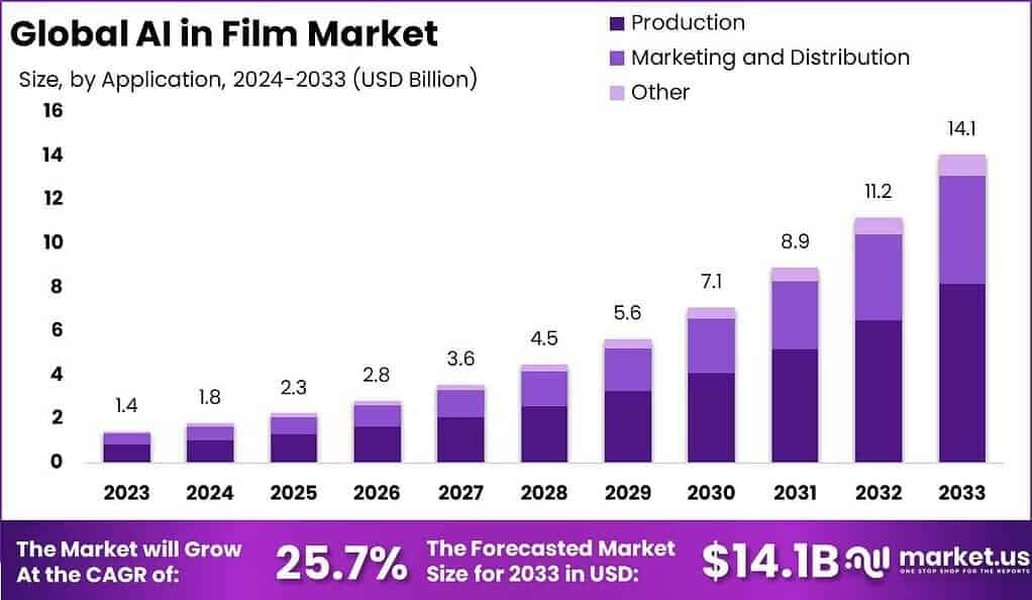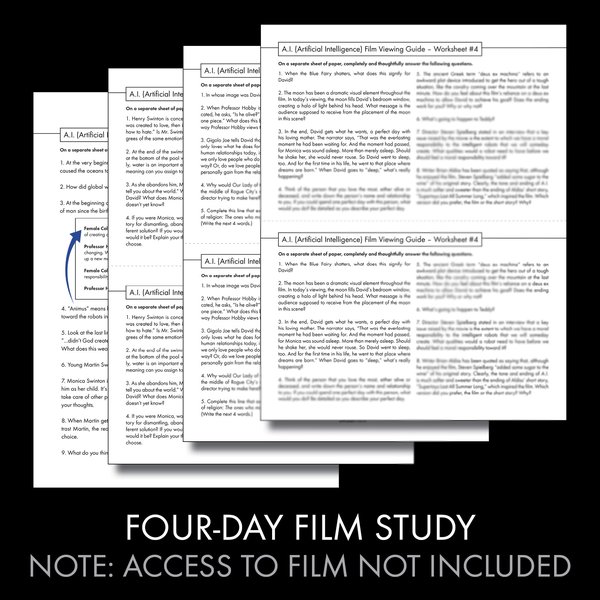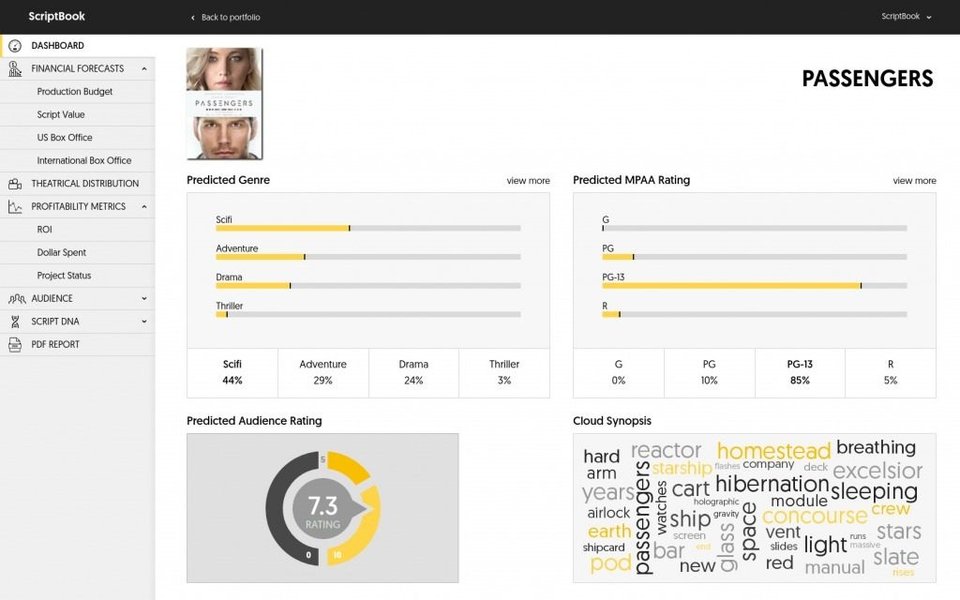
Unveiling the Best AI Minds for Analyzing Movies Through Text Alone
Discover which Large Language Models excel at dissecting film narratives, themes, and characters using only textual prompts in 2025.
Choosing the right Large Language Model (LLM) is crucial when you want to delve deep into movie analysis using solely text-based inputs like plot summaries, scripts, or reviews. The goal is to find an AI that doesn't just process words, but truly understands narrative structure, character arcs, thematic depth, and sentiment. As of April 2025, several powerful LLMs stand out for their text analysis capabilities.
Highlights: Key Insights into LLMs for Text-Based Movie Analysis
- Top Generalists: Models like OpenAI's GPT-4o/GPT-4 Turbo and Anthropic's Claude 3 offer state-of-the-art natural language understanding, excelling at complex narrative interpretation, thematic exploration, and generating nuanced critiques from text.
- Strong Open-Source Options: Meta's Llama 3 series provides powerful, efficient, and customizable alternatives, particularly strong in sentiment analysis and dialogue understanding, making them ideal for developers seeking flexibility.
- Specialized vs. General LLMs: While general LLMs are versatile, dedicated AI tools like ScriptReader.ai and Filmustage leverage fine-tuned models specifically trained on film data for highly detailed script breakdowns and character analysis.
Criteria for Evaluating LLMs in Movie Analysis
When selecting an LLM for analyzing movies based purely on text, several key capabilities are paramount:

AI is increasingly influencing various aspects of the film industry, including analysis.
Understanding the Narrative
Plot Comprehension and Pacing
The LLM must be able to parse complex plotlines, understand sequences of events, and analyze the pacing of the narrative from a textual description or script.
Character Development
It needs to track character arcs, understand motivations, analyze relationships, and evaluate character consistency and growth throughout the story.
Thematic Depth and Symbolism
A strong LLM should identify underlying themes, interpret metaphors, and understand symbolic elements described in the text.
Contextual and Semantic Abilities
Long Context Handling
Analyzing a full movie often requires processing large amounts of text (like a script or detailed summary). LLMs with long context windows (e.g., 128k tokens or more) are better equipped for this.
Sentiment and Tone Analysis
The model should accurately gauge the emotional tone of scenes, dialogue, or reviews, distinguishing subtle nuances in language.
Implicit Reasoning
Understanding subtext, implied meanings, and cultural references mentioned within the text is crucial for deeper analysis.
Output Quality
Insightful Generation
The LLM should produce analysis that is not just descriptive but also insightful, coherent, well-structured, and reads naturally.
Leading LLMs for Text-Only Movie Analysis (2025)
Based on performance benchmarks, research papers, and expert reviews up to April 2025, here are the most prominent LLMs suitable for your task:
1. OpenAI GPT-4 Series (GPT-4 Turbo / GPT-4o)
Consistently ranked at the top for general reasoning, natural language understanding, and generation. OpenAI's models, particularly the latest iterations like GPT-4o, are highly versatile for movie analysis.
- Strengths: Exceptional at understanding complex narratives, identifying themes, summarizing plots, analyzing character arcs, and generating detailed critiques. Large context windows allow for processing substantial text inputs like scripts. Proven effectiveness in tasks requiring explainability and niche recommendations.
- Use Cases: Generating in-depth reviews, comparing films, analyzing script elements (structure, dialogue), exploring symbolism, providing personalized recommendations based on textual preferences.
- Considerations: Proprietary model, accessed via API, which involves costs.
2. Anthropic Claude 3 Series
Known for its strong performance, particularly in handling long contexts accurately and producing nuanced, ethical, and often more interpretive outputs.
- Strengths: Excels at understanding complex instructions, nuanced content generation, and maintaining context over long conversations or documents. Particularly good at analyzing character motivations, emotional tones, and thematic subtleties.
- Use Cases: Deep dives into character psychology, comparative analysis of scripts or adaptations, identifying subtext, analyzing sensitive themes.
- Considerations: Proprietary model, accessed via API.
3. Meta Llama 3 Series (Llama 3, Llama 3.1, Llama 3.3)
The leading family of open-source models, offering impressive performance that rivals many proprietary systems. Llama 3 and its updates (like 3.1 and 3.3) are noted for efficiency and reasoning.
- Strengths: Excellent performance for an open-source model, particularly strong in sentiment analysis, dialogue understanding, and efficient processing. Highly customizable and can be fine-tuned on specific movie datasets (e.g., genres, review styles). Offers a good balance of capability and accessibility.
- Use Cases: Building custom movie recommendation tools, performing large-scale sentiment analysis of reviews, analyzing dialogue patterns, cost-effective script analysis for independent creators.
- Considerations: While powerful, might require more fine-tuning for highly specialized or nuanced analysis compared to top-tier proprietary models.
4. xAI Grok 3
Developed by xAI, Grok aims for sophisticated reasoning and real-time information access, making it a strong contender, especially for analyses requiring up-to-date context (though less critical for established movie analysis).
- Strengths: Strong reasoning capabilities, adept at processing information and generating comprehensive summaries or evaluations based on text prompts. Access to real-time information can be beneficial for analyzing very recent releases or discussions.
- Use Cases: Generating quick summaries and evaluations, integrating real-time discussion trends (if prompted textually), providing rapid recommendations.
- Considerations: Proprietary model. Its unique features might be less central to core textual movie analysis compared to narrative understanding focus.

AI tools are increasingly being used for educational purposes, including movie analysis.
Comparative Analysis of Top LLMs
Choosing the "best" LLM depends on your specific needs, such as the depth of analysis required, budget, and whether you prefer proprietary or open-source solutions. The radar chart below provides a subjective comparison based on common criteria for text-based movie analysis.
Comparative strengths of leading LLMs for text-based movie analysis (Subjective Assessment).
Key Takeaways from Comparison
- For Highest Quality Analysis: GPT-4o/Turbo and Claude 3 generally lead in understanding nuance, complex narratives, and generating high-quality, insightful text.
- For Open Source & Customization: Llama 3 is the strongest choice, offering excellent performance that can be tailored for specific movie analysis tasks.
- For Reasoning Focus: Grok 3 stands out for reasoning, though its advantages might be more apparent in tasks integrating real-time data.
Visualizing the LLM Movie Analysis Landscape
This mindmap provides a conceptual overview of the key elements involved in using LLMs for text-based movie analysis, connecting capabilities, models, tools, and applications.
(Plot, Characters)"] id1b["Thematic Interpretation
(Symbols, Messages)"] id1c["Sentiment & Tone Analysis"] id1d["Context Handling
(Long Scripts, Summaries)"] id1e["Generation Quality
(Reviews, Critiques)"] id2["Top General LLMs"] id2a["OpenAI GPT-4o / Turbo"] id2b["Anthropic Claude 3"] id2c["Meta Llama 3 Series"] id2d["xAI Grok 3"] id3["Specialized AI Tools"] id3a["ScriptReader.ai"] id3b["Filmustage"] id3c["ScriptCoverageGPT"] id3d["(Leverage Fine-Tuned LLMs)"] id4["Input Types (Text)"] id4a["Plot Summaries"] id4b["Screenplays / Scripts"] id4c["Dialogue Transcripts"] id4d["User / Critic Reviews"] id5["Common Use Cases"] id5a["Generating Reviews / Critiques"] id5b["Summarizing Plots"] id5c["Character Analysis"] id5d["Thematic Exploration"] id5e["Movie Recommendations"] id5f["Script Feedback & Breakdown"]
Mindmap illustrating the ecosystem of LLM-based textual movie analysis.
Specialized AI Tools for Script Analysis
Beyond general-purpose LLMs, several platforms use AI (often built upon or fine-tuned from base LLMs) specifically for analyzing screenplays and providing detailed feedback. These tools offer structured outputs tailored to filmmaking needs.

Specialized tools offer focused analysis for screenwriting and production.
- ScriptReader.ai: Provides data-driven analysis of characters (background, personality, goals) and script elements.
- Filmustage: AI-powered pre-production software that includes script breakdown, analysis, and synopsis generation.
- ScriptCoverageGPT: Offers AI-generated screenplay feedback and coverage reports.
- AIScriptReader: Another tool providing detailed feedback and suggestions on scripts.
These tools demonstrate how LLM technology can be specialized for deeper, domain-specific insights relevant to filmmakers and writers, often going beyond what a general prompt to a standard LLM might produce without significant prompt engineering.
LLMs in Action: Building Recommendation Systems
LLMs are also being actively used and researched for building more sophisticated movie recommendation systems. By analyzing textual descriptions of user preferences and movie narratives, LLMs can generate personalized and explainable recommendations. The video below discusses building a movie search/recommendation application using LLMs and vector search, highlighting practical applications.
This video explores how LLMs can power advanced movie search and recommendation engines.
Research, such as the paper "Large Language Models as Narrative-Driven Recommenders" (arXiv:2410.13604v1), confirms that LLMs excel at capturing narrative context from text to provide recommendations, often outperforming traditional methods, especially for niche suggestions. This underscores their capability for deep textual understanding relevant to movie analysis.
Feature Comparison of Key LLMs for Text Analysis
This table summarizes the key characteristics of the leading LLMs discussed, focusing on aspects relevant to text-based movie analysis.
| LLM | Developer | Key Strengths (Text Movie Analysis) | Context Window | Accessibility | Typical Use Case |
|---|---|---|---|---|---|
| GPT-4o / GPT-4 Turbo | OpenAI | Narrative complexity, thematic depth, high-quality generation, explainability | Very Large (e.g., 128k+) | Proprietary (API Access) | In-depth critiques, nuanced analysis, script evaluation |
| Claude 3 (Opus/Sonnet/Haiku) | Anthropic | Long context accuracy, nuanced interpretation, subtext understanding, ethical considerations | Very Large (e.g., 200k+) | Proprietary (API Access) | Detailed character studies, comparative analysis, sensitive theme exploration |
| Llama 3 Series | Meta | Strong open-source performance, sentiment analysis, dialogue understanding, efficiency, customizability | Large (e.g., 8k+, varies) | Open Source | Custom tools, review analysis, recommendation engines, local deployment |
| Grok 3 | xAI | Sophisticated reasoning, potential for real-time context integration (via text) | Large | Proprietary (via Platform) | Quick evaluations, analysis incorporating recent trends (if textually provided) |
Frequently Asked Questions (FAQ)
What kind of text prompts yield the best movie analysis?
Can LLMs understand cinematic techniques (like cinematography or editing) from text alone?
Are open-source LLMs like Llama 3 good enough for serious movie analysis?
How do specialized script analysis tools differ from using a general LLM like GPT-4o?
Recommended Further Exploration
To deepen your understanding, consider exploring these related topics:
- How can I craft the most effective prompts to get deep movie insights from an LLM?
- What are the specific differences between GPT-4o, Claude 3, and Llama 3 when generating creative text like film critiques?
- What are the inherent limitations when relying on LLMs to interpret subtle film subtext or cultural nuances described only in text?
- How can I use open-source LLMs like Llama 3 to build my own personalized movie recommendation engine based on textual analysis?
References
Last updated April 30, 2025